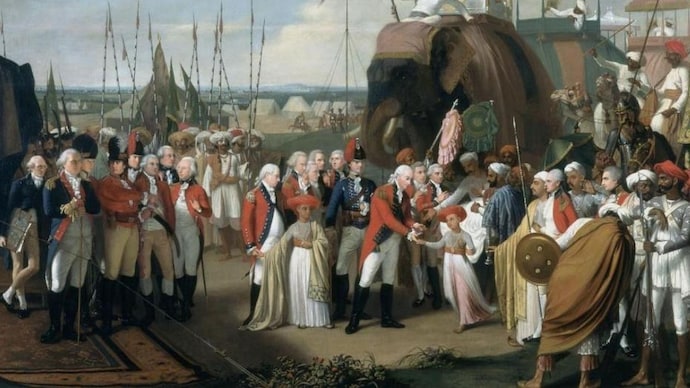When and why did the British first choose to invade India?
The British first landed in India in Surat for the purpose of trade. Here’s how and why a simple trading company, the British East India Company, became one of the biggest challenges the subcontinent had ever dealt with.

The British landed in India in Surat on August 24, 1608. While India has a rich and recorded history going back 4000 years to the Indus Valley Civilisation in Harappa and Mohenjo-Daro, Britain had no indigenous written language until the 9th century almost 3000 years after India. Then how was it possible for the British to start capturing this huge country and control it from 1757 to 1947?
They had more economic power, better weapons and a certain European confidence which allowed then to slowly permeate into the Indian subcontinent till it was ruling the huge nation.
New sea route becomes popular
A sea route connecting Europe to India came into the limelight in 1498 when Portuguese explorer Vasco da Gama came to Calicut.
This made India the centre of attention of Europe’s trade circuit and European powers rushed to Asia to get their own trading posts.
Even though the primary motive at first was trade, slowly, the European powers started to get more interested in Acquiring territory. The British were one of these powers looking for money and action.
How was the British East India Company formed?
The British East India Company was formed in 1599 under a charter granted by Queen Elizabeth in 1600. The British Joint Stock Company, as it was known earlier, was founded by John Watts and George White for trade with Asian nations in the south and south-east.
British merchants and aristocrats held shares in this joint stock company.
The British government had no controlling authority over the company and they shared no direct link.

How did the British land in India?
The British East India Company came to India as traders in spices, a very important commodity in Europe back then as it was used to preserve meat. Apart from that, they primarily traded in silk, cotton, indigo dye, tea and opium.
They landed in the Indian subcontinent on August 24, 1608, at the port of Surat.
Mughal emperor Jahangir granted a farman to Captain William Hawkins permitting the English to erect a factory at Surat in 1613. In 1615, Thomas Roe, the Ambassador to James I, got an imperial farman from Jahangir to trade and establish factories all across the Mughal empire.

Soon, the Vijaynagara Empire also gave the company permission to open a factory in Madras and the British company started to eclipse out the other European trading companies in their rising power.
A number of trading posts were established all over the east and west coasts of India and British communities developed in the three major trading towns of Calcutta, Madras and Bombay.
How did the influence and power of the British grow in their early years in India?
Job Charnock, the founder’ of Kolkata, established a factory in 1690 at Suttanati.
The city of Calcutta was finally founded in 1698 when the British acquired the zamindari of three villages Suttanati, Kalikata, and Govindpur.
Soon after, Fort William was set up in 1700.
In 1717, John Surman obtained a farman from Farrukhsiyar, which gave large concessions to the company. This farman has been called the greatest win for the British East India Company.

How the British entered Indian politics
The early East India Company realised that India was one big collection of provincial kingdoms and wanted to concentrate all the resources. Thus, the company stared to meddle in Indian politics and started to see a steady rise in their fortunes.
The first biggest strike from the British on India was the defeat of the Nawab of Bengal, Siraj-ud-daulah, at the hands of Robert Clive in the Battle of Plassey in 1757.
It was followed by the Battle of Buxar in 1764 wherein Captain Munro defeated the joint forces of Mir Qasim of Bengal, Shujauddaula of Awadh and Mughal king Shah Alam II.
Slowly but surely, the East India Company started to transform from a trading company to a ruling one.
The powers of the East India Company kept growing till 1858 when it was dissolved after the Revolt of 1857 and the British Crown took direct control of India to begin the British rule.
Read: The British rule in India started on this day, 251 years back
Read: India's first war of independence: All you need to know on its 160th anniversary
Read: #OnThisDay: Battle of Plassey was fought and won by East India Company
Interested in General Knowledge and Current Affairs? Click here to stay informed and know what is happening around the world with our G.K. and Current Affairs section.
To get more updates on Current Affairs, send in your query by mail to education.intoday@gmail.com
